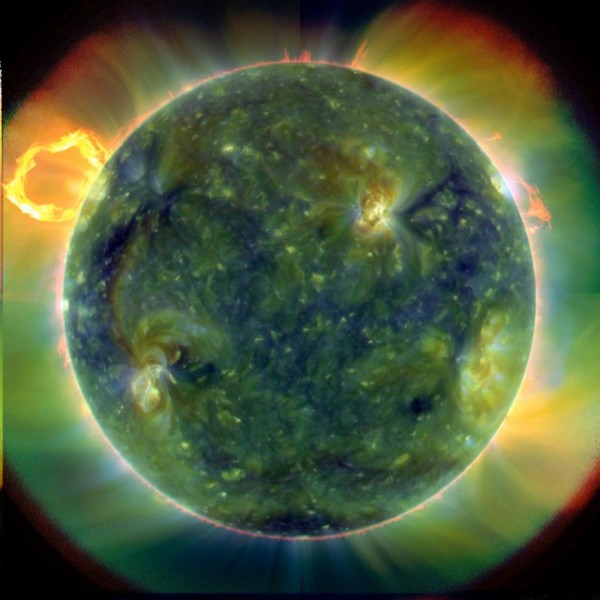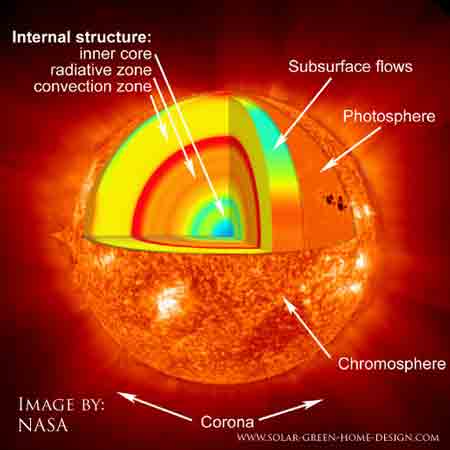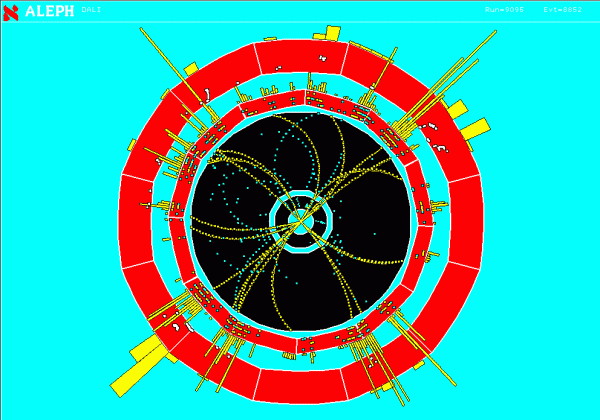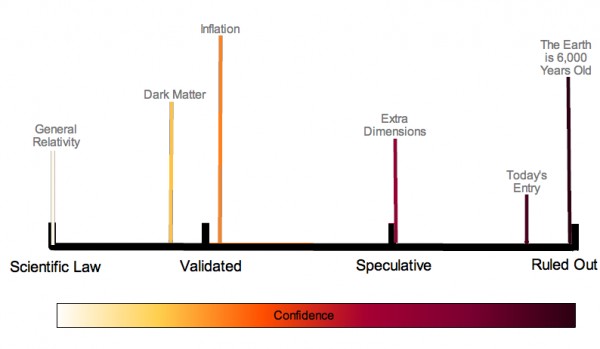He was a dreamer, a thinker, a speculative philosopher... or, as his wife would have it, an idiot. -Douglas Adams
When I started writing about science online in January of 2008, I put the word out that I would accept questions from my readers. After all, I knew that there was a lot of misinformation out there, as well as the more insidious "technically correct but misleading" information about science.

In particular, I want to get the actual information that we know out there. As far as what I can contribute, I'm confident that I can add an expert voice for my specialties (physics, astronomy, and cosmology). What started as a manageable two or three messages a week has escalated into...

Well, let's just say I've learned that many of you are really interested in this stuff, which is awesome. And most of the messages I get ask me to take a look at a new idea, paper, or article, and to evaluate how good it is. This is a great idea, and I'd like to do this, and I'd like to give many of you the opportunity to weigh in.
So we're going to try something new here: an open thread. There are lots of ideas, papers, and news reports out there, and nearly all of them are reported as the next big breakthrough. Are they really? I'm going to choose a convenient way to rank the scientific ideas that we encounter.

What do I mean by each of these four categories? Let's go through them one-by-one:
- Scientific Law: This is really an elite category, reserved for the most thoroughly tested, rock-solid theories and ideas that we have. These are theories that have stood the test of time, as well, making many new predictions that have all been confirmed experimentally and observationally, where there's practically no room for dispute other than making extensions or variations to the law itself.
- Validated: This is for theories and ideas that do have lots of supporting evidence, but aren't as solid as scientific law. Perhaps they're lacking confirmation of a crucial part or two, or perhaps their predictions are too uncertain, or perhaps they simply haven't been tested well-enough to be sure. We believe the observations and evidence, but the explanation, although valid, isn't necessarily the only (or best) possible explanation.
- Speculative: This is, by far, the most common type of theoretical idea that gets reported. Sometimes it's testable, in which case it can either be validated or ruled out. Other times, it's not testable at all, meaning that it'll remain speculative until it can be tested, if that ever happens. There are many differences of opinion over which speculative ideas are compelling and which ones are rubbish, but I greatly prefer the ones that can be tested, in principle and in practice. (See the Douglas Adams quote at the top.)
- Ruled Out: This is the counterpart of the left-side of the spectrum. To test a speculative theory and come up with an observation or result contrary to your theory's prediction helps put you in this category. A ruled out idea can always be modified and revived, which should knock it back toward the speculative category, where it can hopefully be tested.
You'll notice that this isn't a strict categorization; rather, this is a spectrum. So let's take a look at our first piece (which at least four of you have written to me about), the idea that dark matter may be accumulating in the Sun, and altering the way the Sun emits heat.

You can go read the Wired link above for the optimist's take on it, but I know too much to fall for it. This is a speculative idea at best. First off, the thing they're trying to explain -- the problem of heat transfer in the Sun -- is a very difficult problem to tackle. The "known physics" does a very adequate job of explaining what we observe, and the difference between what the theory predicts and what we observe is smaller than the uncertainty in the theory!

In other words, there's no motivation for this exotic explanation. But second off -- and this is even worse -- the type of dark matter that is required to cause this effect in the Sun is almost completely ruled out! If dark matter were as light as the authors contend, we'd expect to find evidence for it from electron-positron colliders.

And since we don't find that evidence, it means the interactions are weak. How weak? So weak that there's only a small range left where they can affect heat transfer in the Sun without conflicting with the data from colliders.
So where would I put this idea on our spectrum? I'd place it to the right of speculative, because it's almost ruled out at this point. Here's a graph with my placement of some other theories as well.

If and when we can directly detect the particle behind dark matter, I'll promote it to Scientific Law. If we can narrow down inflation to being a particular model or due to a particular mechanism, I'll push it over the line, away from Speculative, past Validated and towards Scientific Law. And until we find a reasonable way to test against it, extra dimensions are going to remain stuck in the Speculative category. (And for those of you wondering, Erik Verlinde's theory is stuck in the speculative category, too, at least for right now.)
So, here's your big chance. What ideas, theories, reports, or stories are out there that you want more information about? What craziness have you heard that you need a more solid take on? Or, what good, valid science is out there that people still don't believe? Let's hear from you!

Do worm holes exist, and if so, what the hell are they in real life and not science fiction?
I wonder how solid the hypothesis/theory(?) of the higgs field is. I don't really understand it (yet?) but "from what I've read" (yes, OMG I'm actually going to finish this sentence!) it seems to me like the theory of a luminiferous ether with the difference that it influences the quantity of particle masses instead of transporting light. It would be nice to see a short explanation of that theory and where you would put it in your graph. Maybe you could comment on my naive, almost completely unreflected comparison between ether and higgs field.
I'm glad to see over the last few years dark matter has been validated. I'd been sort of concerned before that it was going to end up being astrophysics' phlogiston.
Great post all around. Which, I think another thing that a lot of people don't understand and need explained to them is about what a scientific model is, and how everything we know about the natural world is built upon or into a model.
One addition to your definition of scientific law, it also includes that the limitations and boundaries have been set correctly. To use your example of General Relativity, works for everything above the nanoscale (or where ever you set the boundary for quantum effects).
I agree with Fox â a write up on the Higgs would be great! What are the odds of it being found at CERN? How does it work exactly? Etc. etc.
Also, could quark stars actually exist? How would we detect them?
If gravity is considered the bending of space-time, why is it still considered a force? Do the other forces also bend space-time? (I didn't think they did.) I would think the ideas of unifying forces wouldn't include gravity.
AFAIK, none of the four forces are repulsive at long range. How does this get reconciled with an accelerating expansion of the universe?
Ethan, you've thoroughly peaked my interest in gravity waves and the cosmic neutrino background. An in-depth discussion of either of those would make my day!
Also, that scale you drew up is a handy metric. I'd love to see other topics added to it, and watch them shift around as the scientific data pours in. Come to think of it, that sounds like a full-time job.
Is space created by quantum fluctuations in a vacuum?
Presumably this does not occur outside our Universe, If quantum fluctuations occur via the uncertainty principle, then wouldn't space be created between the fluctuations and be space-less when the fluctuations did not occur?
In other words their is no space past the furthest fluctuation.(outside our Universe)(if their is such a thing)
If this is correct then is not space an artifact of the fluctuations of mass/energy?
And we speak of fluctuations...we do mean energy/mass...Right?
I have a very speculative idea, which may be very silly indeed. But I'm hoping to see an explanation of what is wrong with it.
My idea is that dark matter is the same thing as dark energy, but it -- whatever it is -- behaves differently in the presence of mass. So in the presence of other matter, it adds its effect to that existing mass to produce the observations of mass-like effects, and in the absence of other matter, it causes spatial expansion.
Wacky, huh?
The non-absorbed part of the light spectrum is what gives photosynthetic organisms their color, for a tree this colour is green. Given that a tree uses photosynthesis in two stages to rid itself of carbon dioxide and within this process between photosynthesis and photolysis a proton gradient is set up across a chloroplast membrane, does not this action take place within the electrical environmental parameter of the space around the tree and is this function not susceptible to an operating parameter dictated by planetary emissions which in turn is effected by solar flux?
Would not the electron transport chain that leads to the ultimate reduction of NADP to NADPH be effected by the ambient electron field in which it exist?
Is not the health of our life (oxygen) giving trees on land and algae in water a direct response to the solar flux and sun driven planetary emissions?
Given the phenomena of lightning as the transportation of electrons is wrong!
Due to the renormalization of the exited atoms, photons and x-rays are released to form lightning in what you could call the violent relaxation of the atoms involved.
The electron flow is not dictated by the illusion of the path of lightning.
Lightning or to be more accurate renormalisation begins at the point of disconnection and is totally separate from the direction of electron flow.
Sphere Coupler
I forgot to mention that this holds true for sprites and blue jets and all forms of electron transportation and if you are wondering which way the flow transpires...it is both and it is reliant on the difference of potential between the ionosphere and the lithosphere.
Since no one can explain what Dark Matter is, it might be helpful to consider every possible option and group these options in a table:
One Option from each Group:
Group 1
1. BM & BM mutually attract --- Scientific Law --- Selected
2. BM ignores BM --- Ruled Out
3. BM & BM mutual repel --- Ruled Out
Group 2
4. BM & DM mutually attract --- Not supported by observation --- Selected
5. BM ignores DM --- Ruled Out
6. BM & DM mutually repel --- Supported by observation --- Rejected by most scientists
Group 3
7. DM & DM mutually attract --- Not supported by observation --- Selected
8. DM ignores DM --- Supportedby observation --- Rejected by most scientists
9. DM & DM mutually repel --- Ruled Out
1 + 4 + 7 combined. This was the first choice of science. The bandwagon. It needs an epicycle (a sudden acceleration in the expansion of the universe 5 bn years ago) to explain the unexpected dimness of type 1a supernovas observed in images of lensed galaxies.
1 + 4 + 8 combined. If forced, this would be the reluctant second choice of orthodoxy. No one has done a simulation for this.
1 + 6 + 7 combined. If forced, this would be the very reluctant third choice of orthodoxy. No one, other than Petit, has done a simulation for this. (Yes, the simulation worked and eliminated the need for an epicycle required for the 1 + 4 + 7 option).
1 + 6 + 8 combined. If forced, this would be the extremely reluctant fourth choice of orthodoxy. No one has done a simulation for this.
The selection of option 7 is often accompanied with the unsubstantiated assertion that particles of DM âannihilateâ when they meet. Not only is that assertion not supported by observation, it is ruled out by the behaviour of DM observed in colliding galaxies.
My first question is, why are so many scientists eager to make this assertion?
My second question is, bearing in mind Petit's successful simulation, can a simulation based on either of the two remaining combinations above be made to work?
I've had a few of these questions, but I can't think of them at the moment. Great post, thanks for making me think. I'm going to return here with more questions later.
Yeah, as #6 mentioned, that was my understanding of General Relativity (objects follow a "path of least resistance" through warped spacetime). If that's the case, and GR is accepted as established fact, why the search for the graviton?
Sorry for errors I am posting from my iPhone. One thing I have thought about a lot is that as I understand it the Universe is unlimited or infinite. But the Big Bang theroy makes for a universe that was once finite. How do you get from one to the other? Or do I just misunderstand the concept of infinity?Math is hard after all.
Two points.
I don't like Scientific Law as an end-point. I think we should preserve Law to mean an observed regularity in nature, rather than an extremely well supported theory. This means we can keep non-Newtonian flow, non-Hookean materials and non-Ohmic conductors without looking like total pratts. On the other hand, we do need a name for an extremely well supported theory, but I cannot propose a suitable word.
Second point, there needs to be a slot between Speculative and Ruled out marked Half-baked idea, such as this one I had many years ago as a PhD student. The stronger the coupling constant of an interaction, the more symmetries, the more conservation laws it obeys. The strong nuclear force conserves baryon number, colour charge, a whole host of things including charge, parity and time. The weak force doesn't conserve most of them and CPT only together, not separately. EM drops a couple more.
Gravity has the smallest coupling constant. Conservation of energy comes from symmetry in time, that all places in time are pretty much observationally identical. But 13.7 billion years ago something interesting happened which seems to be different from anything ever since. Perhaps gravity, with its tiny coupling constant, conserves energy only approximately, similar to the way the weak force conserves charge only approximately.
Hm. Perhaps `Half-baked' is giving it too much credibility. Can anyone suggest a better classification.
How about a work in progress?
Scientific laws are not well confirmed theories. Evolution is as well confirmed as you'd like, but it will never become the law of evolution because it is much broader than a law. Likewise physical laws, such as laws of thermodynamics. They are not well confirmed theories. A theory such as quantum mechanics or relativity will have to explain these laws, but that shows that laws are not theories, but regular phenomena.
I'd love to see something on the Holographic Principle. My guess is somewhere in the "Speculative" region, but I have no idea where.
Also, I tend to think of "Law" as being more of a legacy term than anything else. The reason GR is Einstein's Theory of General Relativity and not Einstein's Law of General Relativity is simply that we're not as presumptuous anymore to assume any theory we have will be the final word. Just as GR corrected and expanded Newton's "Law" of Gravity, we'll eventually find the need to expand relativity. Is anything given the term "Law" anymore?
OK - maybe slightly off topic but I'd appreciate it if someone could tell me whether this (parochial?)news story is significant...
http://www.irishtimes.com/newspaper/frontpage/2010/0722/1224275197175.h…
"Subatomic particles rediscovered" - early analysis of CERN data has identified Z and W bosons.
I'd be interested to know if this actually is significant at all - I'm reading thinking that "rediscovering" something is not really a breakthrough.
I agree with Mr Harwwood @18 that "Scientific law" is an inaccurate term. Technically (as I recall), a Scientific law describes a mathematical formula that describes a phenomenon accurately, but for which no mechanism is known. Examples: Newton's law of gravity; Snell's law and a whack (TM) of others (http://en.wikipedia.org/wiki/Scientific_laws_named_after_people). Some "laws" are even wrong: for example, General relativity explains the precession of Mercury, whereas Newton's law can't. I suggest replacing "Scientific law" with "(Accepted) fact" (parentheses to emphasize the tentative nature of scientific thought. We can only declare hypotheses to be invalid; the alternative is "fail to reject", not "accept".)
But, to get back on topic, here's "Lactin's lesser conjecture": "If whoever invented funnels hadn't, then someone else would have." Discuss.
djlactin, that reminds me of a joke I read on a screen saver a dozen or so years ago:
More seriously, there are a lot of crazy comments here! (Alan L, #13, very interesting points.) Here's my own: I read a lecture by John Preskill, discussing the information paradox, and at one point he says,
He uses this as an argument that information is conserved (since the universe isn't heating up), but I immediately began wondering: how do we know the universe isn't heating up? And now the question: how do we know the CMB isn't actually the result of heating the universe by say, quantum vacuum fluctuations? And when you heat something, it expands--maybe like Hubble? I assume we have already ruled out this simple picture, but I don't know how. If not, it seems like this could potentially resolve the "low entropy origin" problem that Sean Carroll talks about too. Should I have sent this question directly to Preskill?
And thanks Ethan! This is a great post, as usual.
Regarding Erik Verlinde's theory, please see Sheldon Gow's attempt at repudiation of said theory at http://arxiv.org/abs/1002.2668.
Ethan,
Great post as always. My question involves antimatter. I almost understand why there is more matter than antimatter in the present universe, but what happened to all the Gamma radiation when the matter and antimatter annihilated themselves. Put another way: after the early universe experienced inflation and began to cool, subatomic particles of matter and antimatter form and then, except for the 1 out of a billion particles of matter left over, all of the said particles turn into energy in the form of Gamma Rays. So, in this very, very young universe energy "cools" to form particles and the particles then create a lot of energy.
I assume that at that point in time the universe is too large, that is, too cool, for the cycle to repeat (energy to matter to energy). What happened to the energy? Is that energy, the Gamma Ray photons created at the great annihilation, what we now see as the CMB?
Ethan, first thanks for having this blog; you (and other commentors) end up raising and answering many questions that I didn't know that I had. So Thanks.
Now a few questions ABOUT EXTRA SPATIAL DIMENSIONS (NOTE: I'M ASKING INDEPENDENT OF WHAT STRING THEORY SAYS OR NOT)
Where on the spectrum do you put Dirac's infinite sea of negative energy particles that have all of the energy states filled up and that can never be observed? And in your mind does Dirac's sea imply extra dimensions?
Similarly, if matter that enters a black hole is cut off from the OBSERVED universe; does that imply extra dimensions?
Similarly, when physicist talk about a cosmic landscape of universes AND baby universes; do such universes imply extra dimensions?
OK, that's enough from me.
There are many, many, many, but I'd start with what a few early commenters said: the Higgs field. I read a sufficiently deep book on QED to understand that W and Z bosons should be massless according to gauge theory. So the Higgs field was introduced as having a non-zero VEV. The W and Z interact with this field and so are screened by it, making them short ranged "as though" they have mass. And if other particles interact with it, too, it can explain all of their "apparent" masses, without the underlying gauge theories being muddied (or broken) by mass terms.
Now that all makes sense when we're talking about virtual force-carriers, but what it didn't explain was: how does a screening effect lead to the other properties we associate with mass? Namely, gravity and intertia. (Or even sublight speeds, though I suspect this is more easily explained, and the other two bug me more.)
Yes and even the laws were meant to be broken or at least seriously bent if the evolution of our various understandings teach us anything at all. By way of example, I ran across a good presentation on the Light Cone which speaks volumes as to how knowledge progresses. http://physics.syr.edu/courses/modules/LIGHTCONE/index.html
Even the most stalwart of progressives sometimes tend to place themselves at the apex of evolution as opposed to being just another data point on the long and continuing line. Realistic convention would end their statements of "fact" with ... as opposed to . Always remember, Humble is not just a seemingly self effacing name for an extinct oil company, it too evolved. http://en.wikipedia.org/wiki/Humble_Oil
I would love to see posts on these two topic. This one I suggested as a post in another section. It was echoed by #7 as well. Gravity waves. I think another interesting post would be one covering stars trapped in tight orbits of super massive black holes; and the different fates that potentially await theses stars. I know that these stars interact with each other gravitationally while they orbit the SMBHs at high speeds, which can result in some pretty interesting outcomes.
Brian Cox, on one of his TV programmes, said 'We are moving through time at the speed of light". Explain.
How many stars explode into supernova per day/month/year? How will this number change over time and how is it different from the past and of course why?
This is nothing more than a thought experiment, which suggests to me anyway, that our 3-space must be embedded in some 4-space domain, and extrudes slightly into that domain. In a very real sense, that 4D domain is necessary for the 3D world to exist. (Which begs the question of course ... does that 4-space need a 5-space, etc.)
Start with 2D Flatland, then scale up. The inhabitants of Flatland are Squares, say. What does Square A see, when it meets Square B? Square A sees a 1D line, the outside edge of a side of Square B. Initially that is intuitive, but think about it. Doesn't he only see a line, if that line has some thickness? Without some thickness, Square A cannot experience his world.
You're probably representing Flatland in your mind by something like a piece of paper. When you picture what Square A sees, you think "line with thickness of sheet of paper". But that thickness is in the third dimension, a domain not experienced by Flatlanders in a true 2D world, where that line would have zero thickness. But If it has zero thickness, how is the line detectable? How can there be any detection of any kind going on in Flatland, unless their 2D space extrudes slightly into some third dimension, to give it some thickness, any thickness at all, and they can detect that extrusion?
Now scale up to our 3D world. The 1D line that Square A detects, is equivalent to the 2D surface Mr Cube sees when he meets another Cube (with one eye, forget that binocular vision gives him a 3D image). If a 2D Square can detect a 1D line only if the 2D world extrudes into the third dimension, then a 3D Cube can detect a 2D surface only if the 3D world extrudes into some fourth dimension.
That's my story and I'm sticking to it.
dougbennon
To my way of thinking, mathematics(which includes geometry) and language are purely abstract codes or models that refer to their own symbols to build more complex symbols like equations and sentences.
Now to understand a sentence like "my eyes are round"; we must step out of the continously circling within a dictionary. We must use our senses to make sense of words and the world of words. The word "eye" is not an eye.
Similarly, in my view, a geometric sentence like "Without some thickness, Square A cannot experience his world" implies that you have already stepped out of the abstract world of mathematics and are making some kind of assumption about the dimensionality of sense perception. Such an assumption is, in my mind, either a physics hypothesis or a psychology hypothesis to be tested by experiment but not one that can be deduced (i.e. proven) from the axioms of geometry a priori.
Thus on one hand your question seems to be, does the consistency of our 3-dimensional spatial laws of physics plus 1-dimension of time (i.e 4-D spacetime) somehow require another spatial dimension to be more consistent and so on and so on. So in this sense, your question is in part a physics or psychology hypothesis question. To be evaluated by physics theory or even experiment.
On the other hand, maybe, your question should be interpreted as a meta-mathematical question, are there 3-dimensional hypotheses that can not be proven except from the viewpoint of 4-dimensions.
Hope I haven't missed your point or confused your point; but this is what your comment triggered in me. These are just musings, not an answer to the questions you raise.
When someone says that "a model predicts" something, how is that? Are things like the Standard Model just very complicated equations and solutions for certain variables tell you things like spin, charge and color?
Why would you need thickness to "perceive" a 2-D object? Think about it--extend a line across a plane. When it encounters another line, it MUST intersect it.
Hi
Very interesting read through your website - one question.
On the diagram of 'Confidence Scale' why is 'Earth 6000 yrs old' not on the ruled out line??
Surely you're not advocating that it might be (how ever same the possibility)??
Thanks
Nathanial
Thomas: You got my point just fine. From my 3D viewpoint, as that sheet of paper thins to the point of becoming vanishingly small, that 2D world ceases to exist. Maybe that is an argument for our 3-space to be discrete, so a '2D slice' of it cannot have zero thickness.
If dark matter was able to absorb only one unique frequency of energy radiated by the sun, would we be able to detect the absence of that unique frequency when we analyze the entire spectrum of radiated solar energy?
More specifically,could we detect the absence, from the solar radiation spectrum, of one unique wavelength (not a range of wavelengths) somewhere between 3.12629E-10 meters and 6.55630E-04 meters?
Thanks,
Frank
Adding my voice to #17, #19, & #22:
The term "law" should not be (and typically is not) used to mean a very well-confirmed hypotheses. The notion of a "scientific law" is not an epistemic notion.
On substance: I too would be interested in reading your take on the holographic principle.
I have a speculative simple idea that a black hole is just a contained ball of distributed dense radiation that meets the requirements to contain light. This seems to make some singularity advocates quite angry. I'm hoping to see an explanation of what is wrong with the idea. Also I am somewhat stubborn.
I think its logical that when a star above a certain size collapses, the neutrons in the core disintegrate into radiation and some quark matter. As the collapse continues and temperature rises still further virtually all matter converts to radiation. If the radiation is contained in the system, and also calling p is the equivalent mass density of the distributed radiation, the pressure P of the radiation should be P = (pc^2) or (pc^2)/3, depending on what theory you use for radiation pressure. The contained radiation, which has mass, basically acts like a compressed gas that can generate limitless pressure, far exceeding neutron collapse pressure.
Continued contraction of this distributed mass of spherical radiation would logically occur either at the core center where pressure is highest, or at the outer boundry of the radiation sphere where gravitational force is highest. The radiation pressure described above would generate the required core pressure, which for a typical small black hole might be up to 100 times higher than the core pressure of a typical neutron star. The gravitational force on the radiation is zero at the core, and for a distributed mass the gravitational force of course increases as one approaches the surface. At the surface the gravitational force has reached the value where radiation can not escape. This is conventionally called the Schwarzchild radius.
On a sidetrack, I think based on E = mc^2, the absolute maximum pressure P that matter can support is P = pc^2, where p is the density of the matter. It appears that neutron star cores at collapse approach this pressure.
This theory has a major problem. It shows that collapse should not occur in the core. It does not at all explain that collapse does not occur at the surface. But the concept that the absolute maximum pressure P that conventional matter can support is P = pc^2 (where p is the density of the matter) should still be correct.
If during a transient R decreases by dR, R would be smaller than the Schwarzchild radius and collapse would be expected at the surface. An argument can be made that collapse would still not happen because the pressure, which is proportional to density, would increase faster than gravity, but I'm not entirely satisfied with this argument. But Hawkins maintains a small amount of radiation can even escape a black hole.
Hopefully others will be patient with the continuation of this non-rigorous train of thought. I am doing this not to promote a theory, but because if a model predicts results like a singularity or infinite pressure, its probably a good idea to look for other models. It seems pretty clear that with a contained radiation ball collapse at the core center is not a problem because guesstimate pressure formulas like pc^2 or (pc^2)/3 produce the required pressure.
Collapse at the Schwarzchild radius would be expected simply because gravitational attraction exceeds the speed of light. But does this collapse have to continue to zero radius? As surface collapse proceeds, gravitational force will increase as 1/R^2, to many times the speed of light, but the radiation back pressure will increase more rapidly as 1/R^3. Thus it might be possible with enough contraction the radiation pressure at the ball surface will balance the gravitational pressure at the ball surface. If this is the case collapse would stop. (Deeper inside the radiation ball gravitational forces would be weaker but radiation pressure would not be smaller.) Remember we are dealing with amazing pressures - in a less extreme neutron star we already have pressures are equivalent to containing many millions of H-bombs in only one cubic centimeter.
There should be a way to mathematically conceptualy determine the equilibrium condition at the surface of a small radiation ball (contained within the larger Schwarzchild radius sphere). There would be a surface radiation back pressure proportional to the radiation density at the ball surface, which could be estimated by different formulas as a function of M and R. I donât have any basic formulas handy yet for gravitational pressure at the surface of a sphere as a function of M and R on material of density p. Should be doable of course. If anyone has suggestions please post them here.
To get an idea of the pressures that would be at the surface of the radiation ball (to help counteract the large gravitational force), a radiation density of 10^10 kg/m^3 near the surface should generate a pressure of about 3 X 10^26.
It looks like this pressure is much higher than what is needed to overcome gravity just below the black hole's surface! If so, conversion of essentially all matter within a black hole to radiation is not needed for stability, although this should be the restorative process in a transient when the black hole forms and temporarily contracts to significantly less than the Schwarzchild radius. It looks like a stable black hole would have a large core of predominantly radiation, with a large upper atmosphere of conventional matter and radiation.
I'm only 15 but I think very deeply into this sort of thing, and I THINK I just invented a theory that a can't be tested, I can only use models/examples, and i need some sort of evidence other than those. Even though i just said it cannot be tested, it's more of a speculation, I really want you to hear me out on this one, it's not some idiotic thing I came up with in 10 minutes, if you could please contact me i would like to discuss this privately, if you will
OK. BTW, just so there's no confusion, by conventional matter I mean quarks etc, and in summary the internal structure of a BH would follow roughly the same profile equations of a neutron star, except that radiation pressure would be the supporting mechanism; radiation pressure can easily overcome gravity only 10^12 stronger than earth's.
How do I contact you? Email address?
I think the radiation pressure component from contained radiation would be at least 0.667pc^2.
@17 re substitute name for "half-baked"
How about AGBSCFMA?
What does that mean?
"Am groping but still can't find my arse"
(Good italian red wine will do it everytime!)